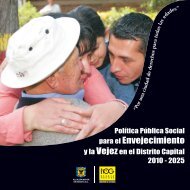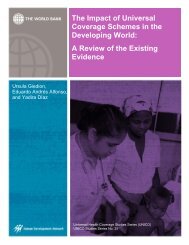11ZAQGM
11ZAQGM
11ZAQGM
You also want an ePaper? Increase the reach of your titles
YUMPU automatically turns print PDFs into web optimized ePapers that Google loves.
Figure 1: Comparison of wildlife populations from aerial surveys performed in 1999 and 2002 (pre-COMACO) versus 2006 and<br />
2008 (COMACO). Variance weighted averages are listed.<br />
Source: Lewis, D., et al. 2011.<br />
several large-bodied ungulates were in decline from 1979 to 1996.<br />
Because these species are desirable targets for poaching and are<br />
particularly sensitive to it, the stability of eland, hartebeest, kudu,<br />
roan, waterbuck, wildebeest, and zebra populations is noteworthy.<br />
Stability of the elephant population is also of special importance,<br />
given the recent local history and focus for regional tourism.<br />
The relative impacts of COMACO’s poacher transformation program,<br />
snare removal, improvements in the efficacy of the Zambia Wildlife<br />
Authority (ZAWA), and other anti-poaching efforts are unclear. (Social<br />
surveys of professional poachers indicate that multiple arrests and<br />
convictions are insufficient to deter most from returning to poaching.)<br />
However, independent evidence from ZAWA’s patrol reports shows<br />
that despite seasonal and yearly fluctuations, an overall downward<br />
trend in snares recovered from national parks and game management<br />
areas was observed by consistent patrolling efforts over time. These<br />
findings suggest that COMACO’s snare removal provided benefits to<br />
wildlife in the areas in which its participants live.<br />
SOCIOECONOMIC IMPACTS<br />
Alongside impressive ecological benefits, COMACO has had<br />
substantial measurable impacts on the social and economic welfare<br />
of the valley’s farming households. These impacts have been seen<br />
primarily through increased household incomes from selling<br />
commodities to COMACO and improved household food security<br />
due to improved access to seed supplies and agricultural practices.<br />
COMACO’s model has also acted as a vehicle for other positive social<br />
impacts, by facilitating access to health advice, and reinforcing<br />
important socio-cultural institutions.<br />
Combating hunger and income poverty<br />
The typical farmer who joins COMACO produces a net deficit of food –<br />
the household runs out of food before the next harvest – and has little or<br />
limited access to markets. A pre-COMACO household livelihood baseline<br />
47






